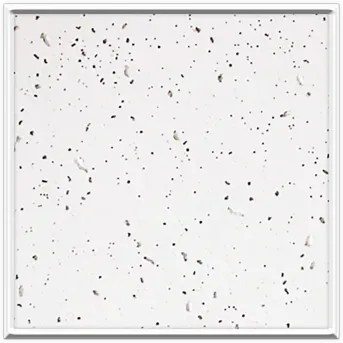Dec . 06, 2024 18:17 Back to list
t grid ceiling system
Understanding the T-Grid Ceiling System A Comprehensive Overview
The T-grid ceiling system has gained significant popularity in various architectural and interior design applications, primarily due to its versatility, ease of installation, and aesthetic appeal. In this article, we will explore what T-grid ceilings are, how they function, their benefits, and applications in both commercial and residential settings.
What is a T-grid Ceiling System?
A T-grid ceiling system consists of a suspended ceiling framework made up of metal grids shaped like the letter T. These grids create a grid-like pattern that supports ceiling tiles or panels, which can be made from a variety of materials such as mineral fiber, gypsum, or metal. The T-grids are hung from the structural ceiling using wires or rods, creating an air space between the structural ceiling and the suspended ceiling below. This design not only allows for the installation of light fixtures and other utilities above but also hides mechanical, electrical, and plumbing systems from view.
How does the T-grid System Work?
The T-grid system operates on a mechanical framework that comprises two main components the main tee and the cross tee. The main tee runs the length of the room and is connected to the building structure. The cross tees are then placed perpendicularly to the main tees to form a grid. Ceiling tiles are inserted into these grids, effectively creating a clean and uniform ceiling surface. The modular nature of the T-grid system means that ceiling tiles can be easily replaced or removed when maintenance of the overhead utilities is required.
Benefits of the T-grid Ceiling System
One of the primary advantages of the T-grid ceiling system is its versatility. This system can accommodate a wide range of tile materials, colors, and finishes, allowing architects and designers to achieve various aesthetic goals while addressing functional requirements. Additionally, T-grid ceilings can enhance sound insulation and contribute to better acoustics in a room, which is particularly valuable in commercial spaces like offices, schools, and auditoriums.
t grid ceiling system

Another significant benefit is the ease of installation. Compared to traditional ceiling installations, T-grid systems can be installed relatively quickly and efficiently. They do not require extensive labor or specialized skills, making them a cost-effective choice for many projects. Moreover, if a section of the ceiling needs to be accessed for repairs or upgrades, the tiles can be removed without damaging the surrounding structure.
Furthermore, T-grid ceiling systems provide an additional layer of insulation, which can contribute to energy efficiency within a building. By creating an air gap between the ceiling and the roof or upper floor, they can help regulate temperature and reduce heating and cooling costs.
Applications of T-grid Ceiling Systems
T-grid ceiling systems are widely used in various settings, ranging from commercial spaces to residential homes. In commercial applications, they are commonly found in offices, retail stores, schools, hospitals, and hotels. Their ability to facilitate easy access to the building's infrastructure while maintaining a polished appearance makes them ideal for these environments.
In residential settings, T-grid ceilings can be utilized in basements, kitchens, laundry rooms, and other areas where aesthetics and practicality are essential. Homeowners can take advantage of the extensive array of available ceiling tiles to create unique designs and personal styles.
Conclusion
The T-grid ceiling system represents a remarkable blend of functionality and design. Its modular structure, ease of installation, and versatility make it a favored choice among architects and builders for various applications. Whether in commercial settings requiring durability and accessibility or residential spaces needing personalization and aesthetics, T-grid ceilings offer a dependable solution. As design trends continue to evolve, the T-grid ceiling system will likely remain a staple in the world of architecture and interior design, adapting to meet the demands of modern spaces while always prioritizing functionality and style.
-
Durable Ceiling T Grid Systems | Easy InstallationNewsAug.29,2025
-
PVC Gypsum Ceiling: Durable, Laminated Tiles for Modern SpacesNewsAug.28,2025
-
Pvc Gypsum Ceiling Is DurableNewsAug.21,2025
-
Mineral Fiber Board Is DurableNewsAug.21,2025
-
Ceiling Tile Clip Reusable DesignNewsAug.21,2025
-
Ceiling T Grid Modular DesignNewsAug.21,2025







